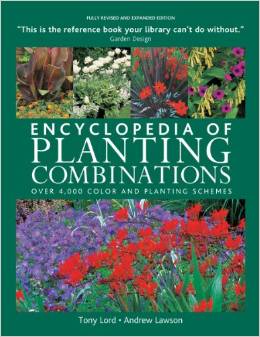 One of the most enjoyable aspects of gardening is planning plant combinations but it can also be the most frustrating. Tony Lord’s book, Encyclopedia of Planting Combinations, is a very valuable tool to have by your side when choosing plants and deciding which ones to grow together. As a photographer, garden writer, and plantsman, Lord has a keen eye for spotting the elements that make a garden special and this book is filled with plant partners that reflect his insights and artistic sense.
One of the most enjoyable aspects of gardening is planning plant combinations but it can also be the most frustrating. Tony Lord’s book, Encyclopedia of Planting Combinations, is a very valuable tool to have by your side when choosing plants and deciding which ones to grow together. As a photographer, garden writer, and plantsman, Lord has a keen eye for spotting the elements that make a garden special and this book is filled with plant partners that reflect his insights and artistic sense.
The first chapter discusses the basic principles of combining plants. The importance of matching the plants’ needs to the climate and soil is considered as well as the role of form, texture, color and bloom time in plant selection. The second chapter deals with planting styles such as bedding, mixed borders, woodland plantings and naturalistic gardens. Insets provide case studies of outstanding garden designers such as Piet Oudolf, Rosemary Verey, and Penelope Hobhouse.
The remainder of the text, 385 pages, is devoted to specific planting combinations. They are organized by plant type: shrubs and trees, climbers, roses, perennials, bulb, and annuals. For each entry the botanical and common names are given, a picture that shows the plant in an effective combination is included, and the features of the plant that make the combination successful are discussed. In addition, other excellent companion plants are listed, information on size, soil, light, and moisture requirements is provided, and hardiness and bloom time are given. With this data the gardeners can find great plant combinations for any niche in their garden or create a new one of their own. Some combinations are of just two plants while other combinations involve many. The many pictures (over 1,000 of them) are a visual feast for the eyes and an inspiration for the imagination.
As the author states, the book is not a collection of recipes for plant combinations, but rather a menu of suggestions that will allow readers to create a garden that meets their own taste and needs. Whether you like bright “in your face” combinations or subtle nuances of harmonious colors, there are ideas and suggestions to make your garden personally satisfying in a variety of climate and soil conditions. The only caveat I offer is that the book seems to be more for English gardeners than American. As a result the plants suggested may not bloom together and therefore, may not be an effective combination. True, the diversity of climates and soil in the United States creates the same problem for combinations that are moved from east to west or north to south the problem is even greater between the United States and the United Kingdom. The second problem is that many of the plants mentioned in the book are not readily available in the United States. More and more new plants seem to be appearing in garden centers and substitutions are possible so this problem may be more of an annoyance than a deterrent. In spite of these little glitches, I love the book and consider it a great asset to my gardening library.